Many thanks to SWLing Post contributor, Paul, who recently shared a link to this Craigslist listing and asked if anyone in the SWLing Post community might be familiar with this Beam Box Electronically Directable FM Antenna.
He included a link to the following review in an archived issue of Radio-Electronics:
https://worldradiohistory.com/Archive-Radio-Electronics/70s/1978/Radio-Electronics-1978-03.pdf
The Cragslist post actually included the following images of the owner’s manual:
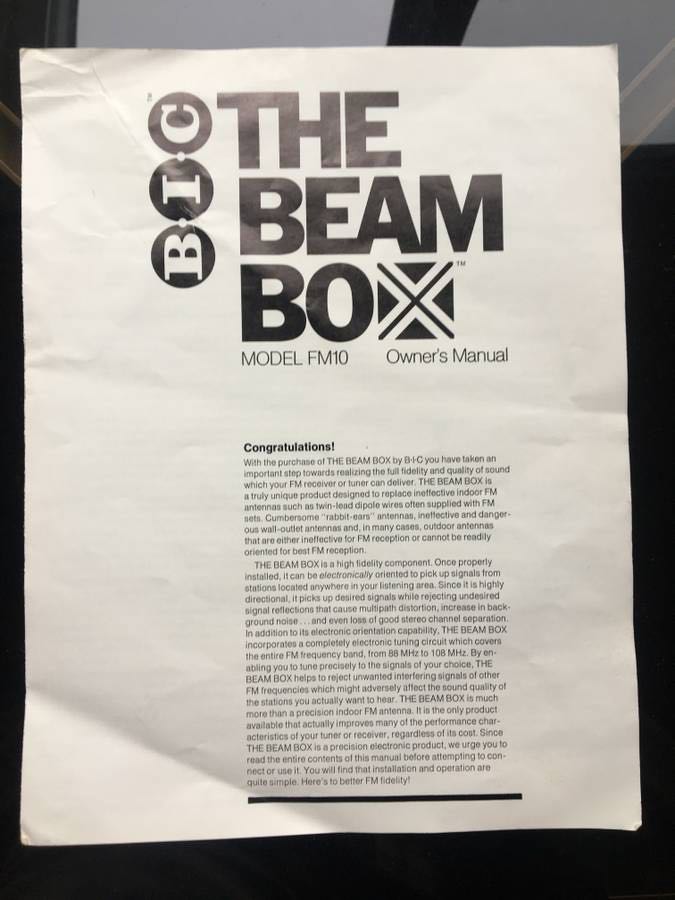
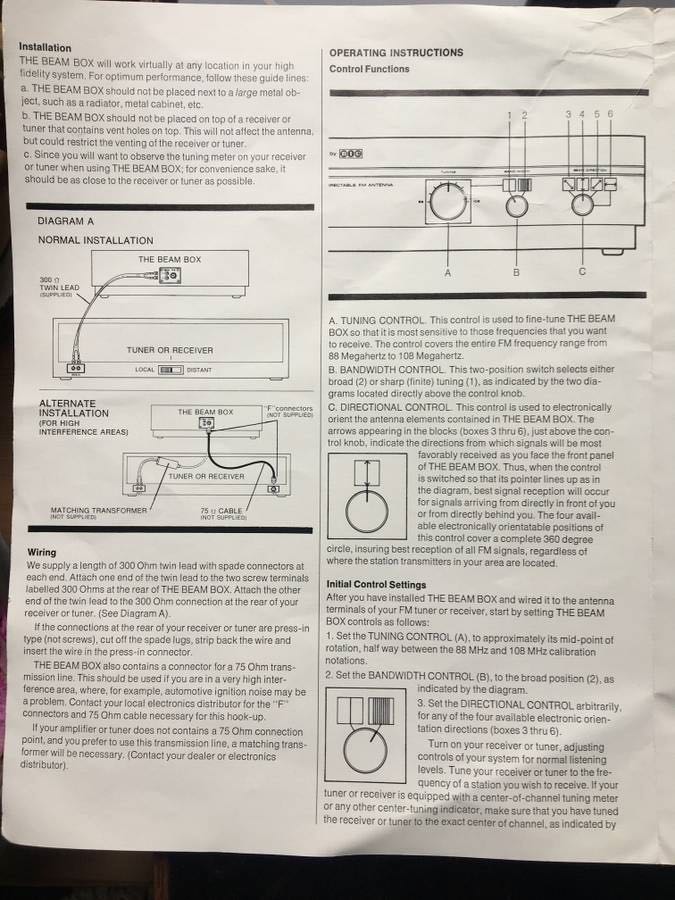
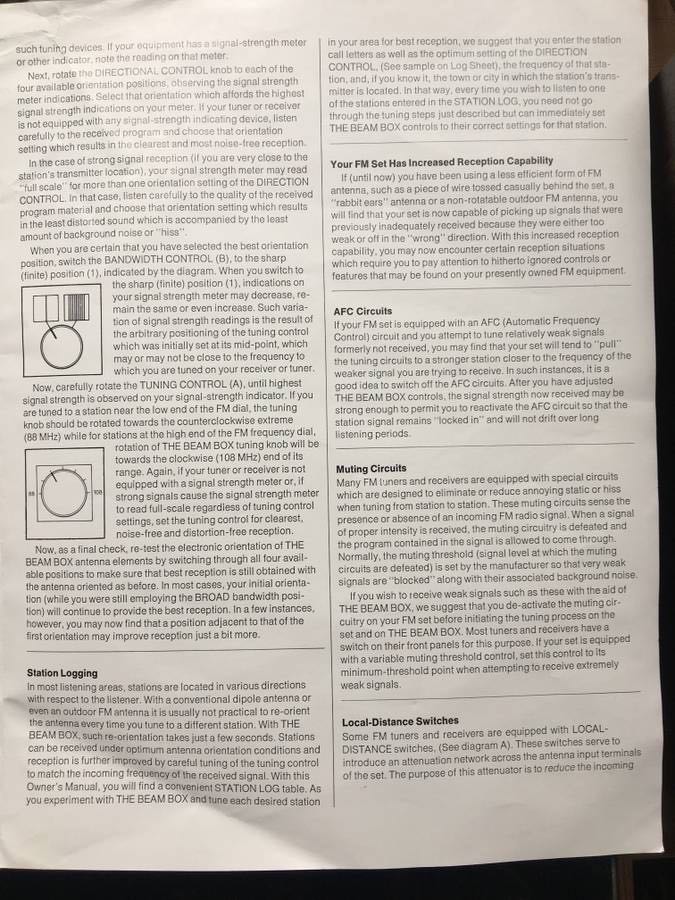
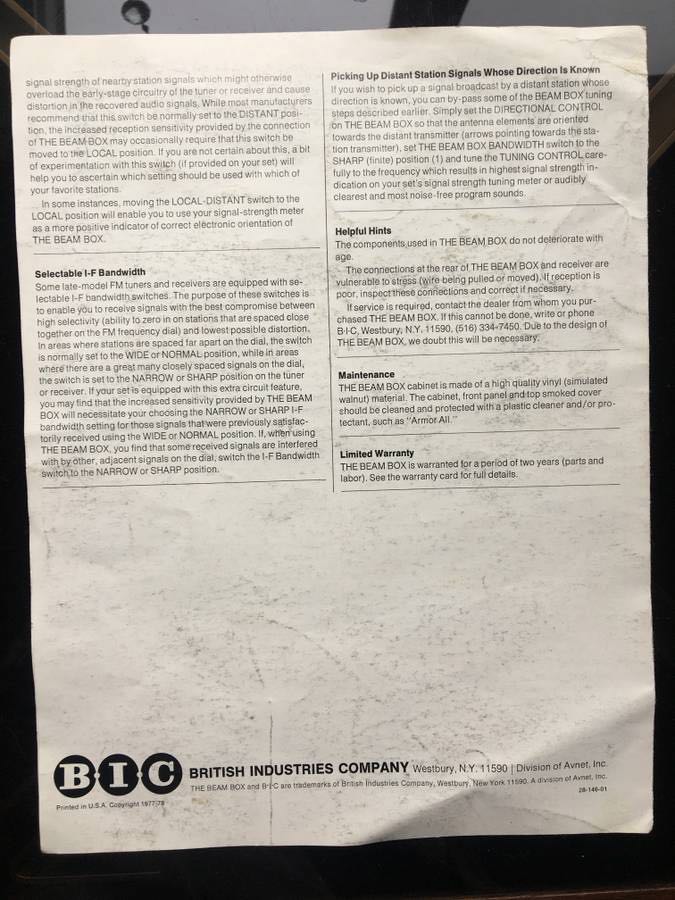 I’ll admit that I’m not at all familiar with this antenna, but I see how it might have been ideal for a component system. I’m curious if it was FM DX-worthy!
I’ll admit that I’m not at all familiar with this antenna, but I see how it might have been ideal for a component system. I’m curious if it was FM DX-worthy!
Please comment if you’ve ever owned the Beam Box!

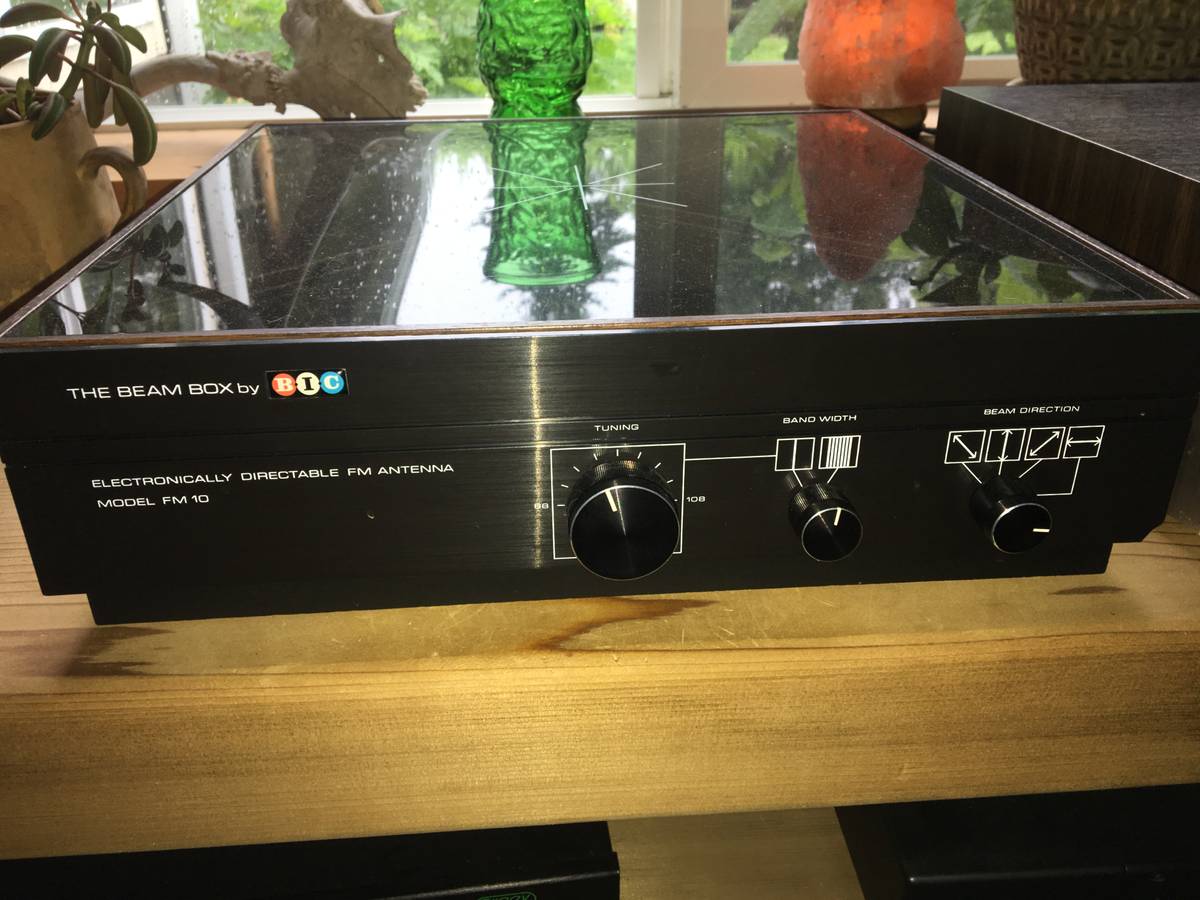
I own not one, but TWO FM-10s! I was a teenager when these came out. I could only afford the lowest end model at the time. Yeah; it was better looking than a dipole but not much better.
I purchased an FM-10 off eBay. Most of my stations are lower powered non-commercial and as far away as 35 miles. The switchable narrowband filter really does improve signal strength, 10-20%. Combined with an FM tuner that has its own narrowband IF filter switch such as my two Yamaha tuners, it’s really improved the signal strength on stations I listen to.
Sure, it doesn’t beat a yagi antenna on a rotor outside, but base on your location and restrictions to outside antenna mounting, it’s a good alternative.
Agreed. The antenna was really only good if you lived very close to to the station you wanted to listen to.
I agree I had the FM 10 model it was a big disappointment for me back in the early 80s. This was to me was a waste of good money unless live very close to a strong FM station
Indoor interference/noise (from I.T. equipment and so on) on the FM band is much more of a problem nowadays than in the late 1970s when this was produced.
I would also say for weak signal reception forget this and use an external antenna – even moreso now than in the past .
As others have said it may well be of use in scenarios where some nearby stations are very strong and causing tuner overload affecting reception on lower strength wanted stations (its narrow bandwidth function) as well as reducing multipath in some cases.
Its also worth nothing – for international readers who may be interested, this device , as is, is for use with FM transmissions with either horizontal or mixed (i.e. circular) polarization. In some countries, most, if not all, their FM stations transmit with vertical polarization only.
When I lived in North Carolina I had a friend who modified an outdoor FM antenna. This outdoor antenna was a similar idea to the Beam Box in that it was a circular array of FM dipoles with multiple coax cables that went inside to a coaxial master switch that allowed you to “electrically rotate” which dipole was broadside to the FM station you wanted to receive. The “twist” was my friend had added wire to the end of each FM element lengthening the quarter wave elements to resonate on 15 MHz. He had made a pretty easy mod to his electrically rotatable FM antenna to make it into an electrically rotatable shortwave dipole antenna. The Beam Box 10 has an added difference: the variable capacitor to fine tune the dipole resonance. Perhaps you could locate a Beam Box 10 next to a window, disconnect the interior FM dipoles and run two coax cables outside to ninety degree oriented dipoles cut to your frquency of interest.
I have a Beam Box 10. I agree with the magazine review. It can be useful to reduce multi-path noise. I is certainly not a DX antenna like the Stellar Labs 2 director, 1 reflector Yagi. The discontinued FM-6 yagi was a bit better. In the garage, disassembled on a shelf, I have the shorter version of the Create Inc. Log Periodic antenna that goes from 105 to 1000 Mhz according to the Create spec sheet but works reasonably well as a broadcast FM antenna.
I owned this Antenna back in the 80’s.
I lived fairly close to NY City, so the big benefit I gained from this antenna is replacing a dipole that would have been in the way (and not approved by the wife!) with a cool looking component.
Not the greatest thing since sliced bread, but a nice addition, worth the money in my mind.
I was going to comment something similar to what 13dka wrote. If you live in an urban area with more than enough signal that some FM stations interfere with each other, then this Beam Box might be useful, though I wouldn’t pay too much for it because you can probably achieve nearly the same thing just by reorienting a dipole antenna.
However, if you really want a decent VHF signal from a good distance away, it would be hard to beat a good Yagi antenna on a tower.
I owned the FM8 version years and years ago. 13dka has it right, this was intended as an antenna in a box that you could stack with all the other boxes of your component stereo system. It was a decent antenna for local and near-local stations but not really a dx antenna.
I recall that the decal with the labeling fell off after a while!
From what I could find out the objective of this thing was providing an alternative to the messy FM dipole stowed away behind the rack, turning the antenna into an important looking component that could optimize reception from the transmitters around in a convenient way. It has very likely 2 shortened dipoles with some passive phasing and simple tuning circuitry inside, which is all not a recipe for big output signals. Certainly not a DX antenna in any way. 🙂